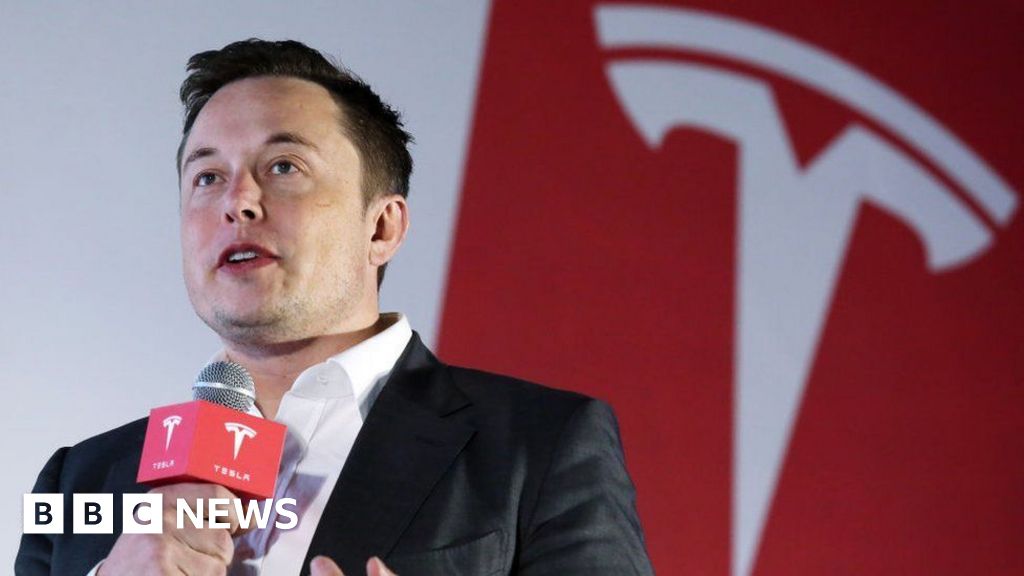Elon Musk’s Cybercab Unveiling: A New Era for Robotaxis
In an eagerly awaited announcement, Elon Musk, the head of Tesla, is set to unveil a prototype of the company’s much-anticipated robotaxi, named the Cybercab, during the "We, Robot" event at Warner Bros Studios in Burbank, California. This event is not just a product launch; it represents a significant milestone in Musk’s long-standing ambition to revolutionize transportation through self-driving technology.
The Vision Behind Cybercab
Self-driving cars have been a prominent part of Musk’s vision for the future of transportation. He has often predicted that these automated vehicles could dramatically change urban mobility by saving lives and creating new revenue streams for their owners. The Cybercab is expected to be a cornerstone of this vision, aiming to combine convenience with profitability by allowing users to rent their vehicles for rideshare or overnight stays.
Anticipation and Skepticism
While excitement builds for the unveiling, there is considerable pressure on Musk to address skepticism surrounding Tesla’s capabilities in delivering the Cybercab. Despite his confident projections, there are notable doubts regarding the timeline and functionality of fully autonomous vehicles. This event follows several delays, with the Cybercab initially scheduled for a launch back in August. Some analysts argue that the continued focus on the robotaxi might distract Tesla from addressing more immediate concerns, such as the need for a lower-cost electric vehicle.
Competition on the Roads
As Tesla embarks on this ambitious path, competitors like Waymo, a subsidiary of Alphabet, have already made significant strides with their own robotaxis, which are currently operating in various U.S. cities. This competitive landscape adds urgency to Tesla’s efforts; the company has to not only catch up but also aim to leap ahead in innovation and implementation.
Musk’s Last-Minute Tweaks
Musk has attributed the recent delays to personal modifications he insisted on making to the robotaxi’s design, as revealed in a post on X, formerly known as Twitter. With industry observers noting the buildup of anticipation, analysts emphasize that the unveiling must include substantial details about the Cybercab’s functionality and design. Jessica Caldwell from Edmunds.com articulated this sentiment, indicating that failing to provide a developed concept could lead to widespread disappointment.
Secrecy and Speculation
Despite the buzz surrounding the event, relatively little is known about the Cybercab’s specifics. Reports suggest it will feature two seats and have distinctive butterfly wings, diverging from the norm in conventional taxi designs. The Cybercab is also expected to utilize a combination of cameras and advanced computing capabilities for navigation, foregoing the Lidar technology favored by some competitors.
The Future of Ride-Sharing
Musk’s plans indicate a vision for a shared network where both Tesla’s robotaxis and customer-owned vehicles can operate. It is speculated that Tesla owners might have the option to rent out their cars on Tesla’s platform when not in use, enhancing the economic viability of owning an electric vehicle.
Analysts’ Expectations for the Unveiling
As excitement builds for the upcoming live-streaming event at 19:00 Pacific Time, analysts from Wedbush anticipate that attendees will witness on-site demonstrations of the prototype. Beyond the unveiling of the Cybercab, they expect Musk to share projections regarding the scaling of the robotaxi service, the cost per mile for users, and details regarding a dedicated ride-share app.
Industry Landscape and Challenges
The deployment of robotaxis has not been without challenges. Recently, operations of Cruise’s driverless vehicles faced a suspension due to safety concerns following a pedestrian incident in San Francisco. This event has cast a shadow over the industry, highlighting the complexities and risks associated with autonomous driving technologies.
Expanding Robotaxi Ventures
Despite these hurdles, the broader sector continues to grow. Waymo recently announced plans to expand its fleet by adding the Hyundai Ioniq 5 to its roster, indicating the competitive landscape’s dynamic nature. Additionally, Uber is pushing ahead with a multi-year collaboration with Cruise, aiming to integrate more autonomous vehicles into its operations.
International Developments
Notably, other players in the robotaxi space, such as Baidu, are exploring international expansion for their Apollo Go service, which is prevalent in several Chinese cities. This move signifies a growing global interest in self-driving technology and highlights the need for innovative solutions in urban transportation.
As the countdown to Musk’s Cybercab prototype reveal continues, the world watches closely. The event could serve as a pivotal moment not just for Tesla, but for the entire self-driving car sector, potentially reshaping the future of mobility in cities around the globe.
